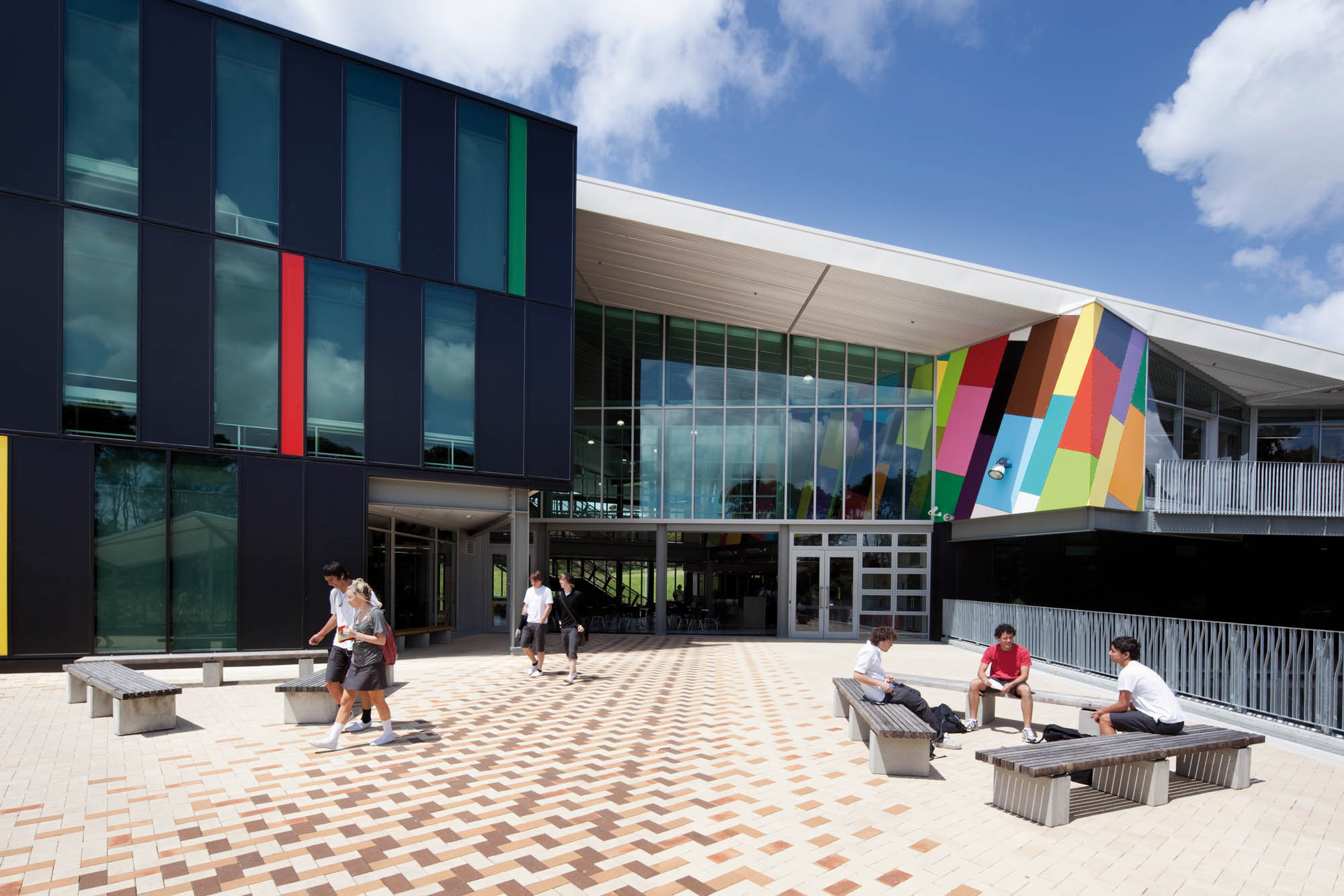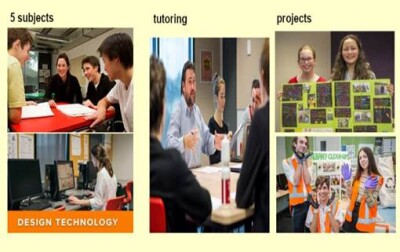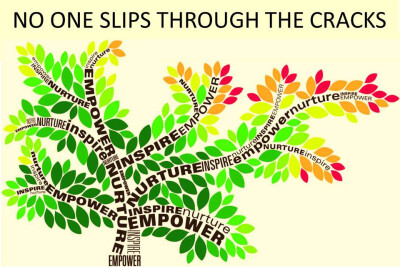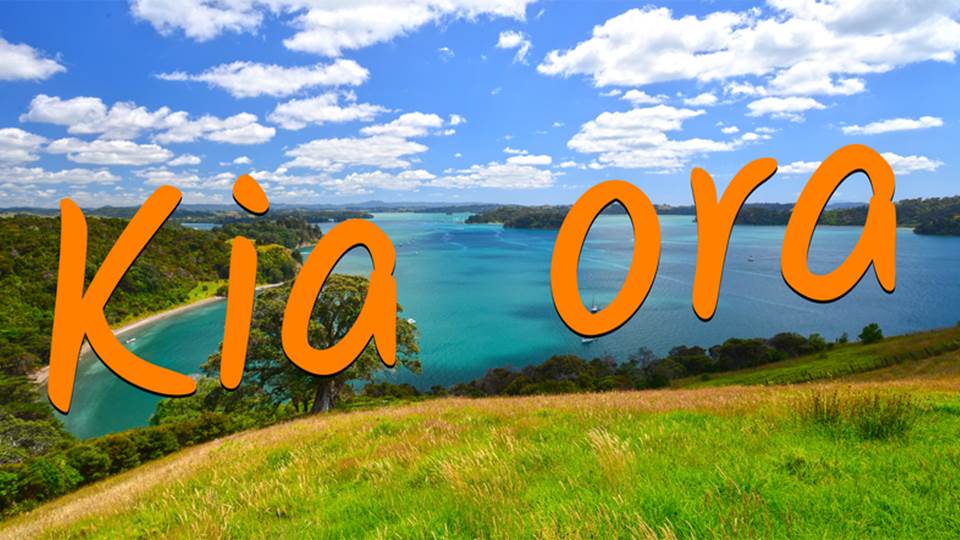And now to New Zealand , discovering what highly devolved self-managing schools are like

IT’S TIME FOR EDUCATION TO
PREPARE FOR THE NEW NORMAL
by Claire Amos
Principal at Albany High School, Auckland, New Zeland
.

Kia ora! My name is Claire Amos and I am the principal here, at Albany Senior High School in Auckland, New Zealand.
And here is an introductory clip to Albany Senior High School that was filmed midway through last year, where we wanted to give people a bit of a snapshot of how we do things at Albany senior high school.
.
So I have been principal here for two and a half years. This is the 12th year that the school has been open and it is still very much regarded as a modern learning environment here in Auckland, New Zealand. We are also one of the very few senior only schools in New Zealand. So that means that we have only year 11, 12 and 13 who come to our school, the last three years before they go out to university or into the workforce. So that was also a bit of a point of difference for our school.
I’m really excited to be joining you, albeit by video stream today. I got so close last year with coming all the way to Bologna to speak and hopefully meet all of you. I do hope that I can make it there in person one day, but I know that we, of course, have to get beyond the situation that we are in at the moment. And I hope everyone here is coping okay. I know that you are still very much facing challenges day in and day out.
So the theme of my session here today is talking about the learnings we have taken from particularly our periods of lockdown here in New Zealand last year. And I’m really interested in how we have, in a sense, used this as an opportunity to design a new normal. So all of us who are passionate about education and the future of education know full well that schools need to change and we need to be designing schools that are able to be agile, able to be responsive and changing to meet the needs of our young people in the world that we live in. And I really just see the last 12 months as being an acceleration of those changes. And I have spoken many times here in New Zealand about this being a once in a pandemic opportunity to take these learnings and in essence, create a new normal for our school. Here in New Zealand, when I’m recording this video, we’re actually not on lockdown. We’re about to start the school year next week, on February 1st .

At this point in time, we’ve been very lucky to have pretty much zero community cases of covid-19 in New Zealand. So we have closed our borders. We do have very strict quarantine happening at our borders for anyone returning to New Zealand where they have to stay in hotels for two weeks before they can come through. And this has led to us maintaining a state of zero community cases for a number of months now.
Regardless of whether we have lockdowns or not we have changed the way that we approach teaching and learning. And I guess the key way that we winch around designing our changes was that we very much worked within partnership with our students, our staff and our community.
So we first went into lockdown last March 2020 and we were learning from home for two months straight. So that was near the beginning of our school year. I had just returned from Italy and having been in isolation at home myself, I returned to school and became aware that we were looking like a lockdown was going to be imminent. I, of course, was very lucky because I had travelled from Italy and I had already seen how cities were closing down. When I was in Bologna the museums and the art galleries were starting to close down, and I was well aware of the realities of us needing to be poised and ready to actually change how we were going to do things.
We are a senior secondary school that is a one to one device school already, so all of our students have their own device and all of our teachers and classes are expected to be facilitators, at least in part through Google classroom as an online platform. So we were very lucky that we already had that foundation and we already had an understanding of how to use the Google classroom space effectively. If students were used to work in Google Docs, they were used to communicate with each other online. And of course, they’re very good at doing that in a social capacity anyway. So when we moved into our first period of lockdown we had a plan in place and that plan looked like a shortened version of our school day, delivered with face to face Google meet. So when we first went into lockdown, we were really aware that our teachers and our educators and also parents and families were dealing with the challenges of a lockdown and so we did not expect them to replicate a nine till three o’clock school day, five days a week.
OUR TIMETABLE AND
HOW WE TRASFORMED IT DURING LOCKDOWN
We have a timetable that is made up of three hundred minute blocks on Monday and Tuesday, on Wednesday, we have a collapsed timetable and our students do impact projects which we work with our community and stakeholders to do authentic real life learning. And then on Thursday and Friday, we again have three hundred minute blocks.
 We have three parts in our curriculum: specialist subjects, tutoring, projects. Our students choose five specialist subjects. They do 100 minutes of each specialist subject on Monday or Tuesday, and then they do a second hundred minute block of each subject on Thursday or Friday.
We have three parts in our curriculum: specialist subjects, tutoring, projects. Our students choose five specialist subjects. They do 100 minutes of each specialist subject on Monday or Tuesday, and then they do a second hundred minute block of each subject on Thursday or Friday.
On Tuesday and Thursday morning they have 100 minutes on what we call tutorial: a small group of students, year 11, 12 and 13, work with a tutor teacher to catch up on the work they do. That’s where they set the goals and plan for the week ahead.
So that is the structure of the timetable we had when we first went into lockdown. It was Monday when the lockdown started and we had the three subject blocks. The students had a check in at 9:00, 10:00 and 11:00 o’clock with those subject teachers. So everyone was expected to add up to a Google meet where the teacher gave them face to face instruction about what they needed to do, and then they went on with the work that was set for them, on Google classroom. And we repeated the same on Thursday and Friday.
Everyone had a Google meet. and then the students could carry on with their work throughout the day by themselves.
On Wednesday, they met up with the Impact Project Mentor. They actually ended up talking about what impact projects could look like in the digital space and then carried on with the learning. And it was our first iteration and it went really well. We were really pleased as we managed to maintain connection with 90+% of our students on a regular basis.
We managed to make sure every single young person had a device at home and had Internet connection. And we could have kept going like that, but one of our really big pieces of learning is to consistently give the student voice. So we did a lot of Google forms. We did questionaries home to our students. We did questionaries to our teachers and we did questionaries to our parents. And we simply asked them what was going well, what was a challenge and what would they like to see more of. And we kept it really simple, but we gave them a lot of feedback. And we did this on a number of occasions to keep refining our approach. And the feedback that we got from our young people was that they actually loved the fact that they could check in the morning and they could carry on with their work in a way that suited them and their households. And if anything, they wanted more of it.
DEVELOPING LEARNER AGENCY

We’re a school that’s committed to learner agency and to the idea of encouraging our students to engage in after learning.
 I had travelled to Canada many years ago and had seen how well self directed learning worked when there were enabling constraints and structures set up around it . So I saw an opportunity here to start going down that pathway and we have a really neat timetable that lends itself to a blended model. It’s got a lot of space, it’s got a lot of time for people to be self directed.
I had travelled to Canada many years ago and had seen how well self directed learning worked when there were enabling constraints and structures set up around it . So I saw an opportunity here to start going down that pathway and we have a really neat timetable that lends itself to a blended model. It’s got a lot of space, it’s got a lot of time for people to be self directed.
So we went back to the drawing board and then we introduced an initiative that was called Developing Student Agency through supporting self directed learning.
I have included a copy of that initiative with this presentation for you to have a look at it. And it was a really simple structure. What we did was looking at the two halves of the week with slightly different focus.
So on Monday and Tuesday, there was still a face to face Google meeting with the whole class and the teacher. After the check in they set up the learning for the week , and they had direct instruction if needed. On Thursday and Friday, they didn’t meet with the teacher at all if not needed. The teacher was still expected to be available, so they often sat on a Google meeting at home while carrying on with their other work preparation. And students knew that they could either make a time or they could drop into that Google meeting with the teacher whenever they needed support. And our teachers ended up using that time for one on one support, small, little targeted workshops. And the students had all of the resources and the instructions and everything they needed to carry on work in a safe manner.
Now, what was so exciting about all of this was our students loved it and they thrived. They thrived because there was a combination of really clear expectations at the start of the week, of face to face teaching and of being trusted to get on with the work by themselves. We still had checks and balances in place. We were still making sure that they completed the work that they were keeping up on track. And if they weren’t, we were checking in with them and putting checks and balances around them.
We were lucky enough to go back into school. So we had a period of time in the middle of last year where we returned to school and went face to face. And again, we gave students voice. We actually asked them once more, what was it that they loved about lockdown? What would they love to keep when they went into school? And the resounding feedback we had was this concept of self directed learning opportunities.
So now what we do in our school is maintaining that blended approach. We have the direct instruction in schools that need to happen or the group work that needs to happen. That happens on Monday and Tuesday. Then what happens on Thursday and Friday? They are still required legally to come to school on Thursday and Friday because we have to take attendance and they’re expected to be here. But the idea is that they can turn up to be timetabled classes. And we have set the expectation in advance that they’ll be working more independently in that time. And so our teachers have gone from being the sage on the stage to the guide on the side.
THREE STEPS TOWARDS SELF-DIRECTED LEARNING

And so we have explicitly worked with our teachers and we have created three different phases of this change.
In phase one of our developing learning agency we have our normal timetable with our students going to all of the normal timetabled classes. The only difference is that there’s more direct instruction on Monday and Tuesday and there’s more opportunity to be self directed on Thursday and Friday.
What we call phase two tends to be later in the term. In this phase there is a bit more agency for the students, but they stay in the timetable classes. The expectation is that they can negotiate with the teachers what to do, for instance if they’re in Maths and they don’t need to do Maths, they can do English if they need to but they can do it in negotiation with their teachers.
And then we have an exciting phase called phase three. We always do this in the last week of the term. On Monday and Tuesday the students have timetabled classes, and on Thursday and Friday they can work wherever they need to inside the school with whatever they need to work with. So often our departments set themselves up, we’ve got an open plan school so they can set themselves up in the open space. If you need to get English help all day, you can go and do that. If you need to do science all day, you can go and do that.
Now, this has been a learning that really came about as a result of lockdown. We have a model that is totally agile. But now we also feel equipped and ready to work in a purely online space as well, with the expectations of teachers being face to face with the group on Monday and Tuesday, but students being more self directed on Thursday and Friday
We see this as a win win because our young people are learning to have more agency, but they are still having the coaching and support they need. There’s still a lot of checks and balances.
I talk a lot about this concept of enabling constraints. I think this is working because we do have a really clear structure around it, but we also have really clear expectations around the pedagogies that support this.
Now I’d like to talk about being more flexible with our assessments. We’ve given up on the idea of a one size fits all assessment model. We’ve always tailored assessments to our young people, but more now than ever. We think about our students having individual assessment plans, and whilst we might offer some standard assessments in each of our classes, we will always work with them to try and be as creative as possible. We’re very lucky here in New Zealand that many of our assessments are internal and so we can often choose the model.
 And the last, and one of the most important learnings that we’ve had is the concept of prioritising wellbeing. So throughout lockdown, we recognise that the very best thing we could focus on was connection. So our teachers made sure that they had one-on-ones with every single student at least every two weeks while we were on lockdown. And that’s something we still prioritise now. We don’t believe any learning happens effectively if you don’t have a sense of well-being, if the students aren’t happy and engaged. So that has become an absolute priority for us here.
And the last, and one of the most important learnings that we’ve had is the concept of prioritising wellbeing. So throughout lockdown, we recognise that the very best thing we could focus on was connection. So our teachers made sure that they had one-on-ones with every single student at least every two weeks while we were on lockdown. And that’s something we still prioritise now. We don’t believe any learning happens effectively if you don’t have a sense of well-being, if the students aren’t happy and engaged. So that has become an absolute priority for us here.
 We’ve this mantra: No one slips through the cracks. So for me, making sure that we look after the individual and their wellbeing but also that we work with individuals to assist them in a way that meets their needs and shows their strengths.
We’ve this mantra: No one slips through the cracks. So for me, making sure that we look after the individual and their wellbeing but also that we work with individuals to assist them in a way that meets their needs and shows their strengths.
And finally, the mantra that I love about the school is that we have a commitment that Albany Senior High School will always be a new school.
So, yes, we have made incredible learnings over the last year during the pandemic and we have taken those learnings and now we are living them. But we will continue to get the student voice. We will continue to look at what’s happening around the world and we will continue to evolve and adapt our model of teaching and learning to make sure that it’s absolutely fit for purpose and meets the needs of all of our young people here in Albany Senior High School.
I look forward to seeing and hearing from many of you. I wish you all the best for 2021 and hoping, fingers crossed, we might be able to get together in 2022. So from me here at Albany Senior High School in Auckland, New Zealand, Kia ora (Thank you) and have a fantastic day.

Download
- Developing learner agency by supporting self-directed learning
- IT’S TIME FOR EDUCATION TO PREPARE FOR THE NEW NORMAL (pdf)




